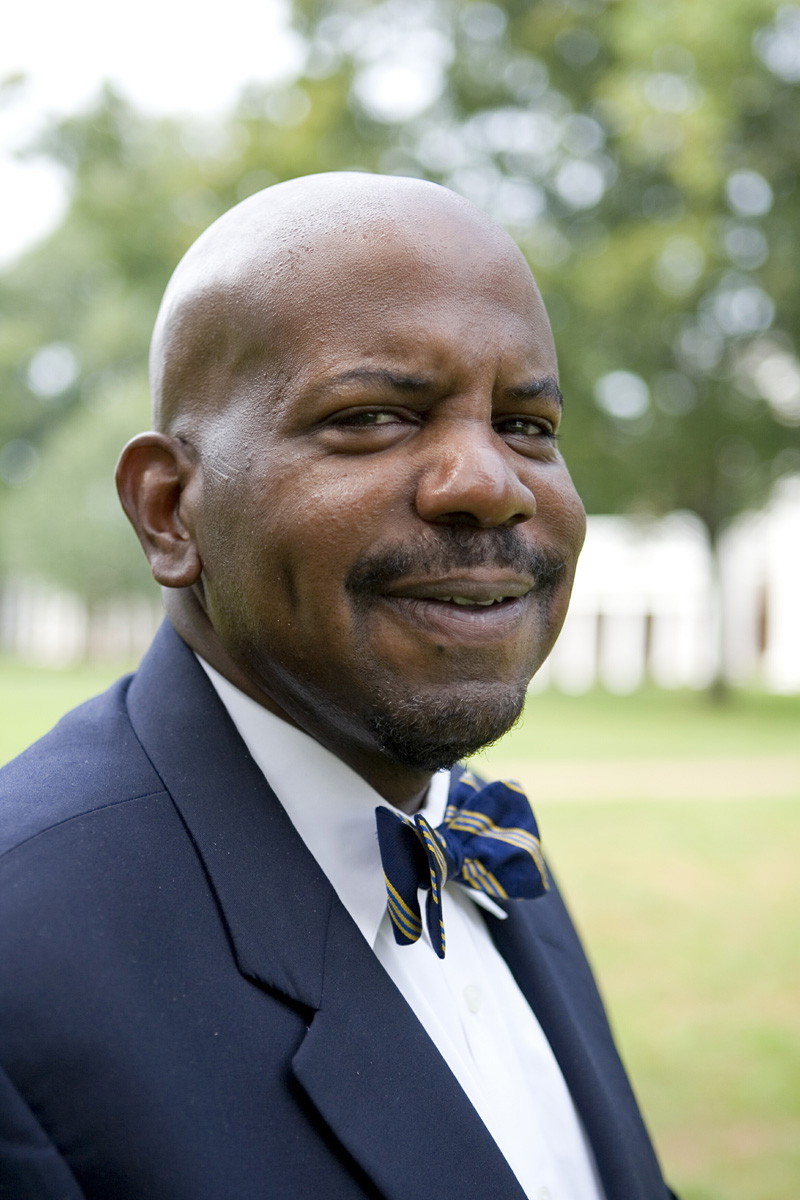Jan. 4, 2008 — The University of Virginia's Dr. Cato T. Laurencin has been named to the 2007 Scientific American 50 "SciAm 50" for his groundbreaking technology for regeneration of the anterior cruciate ligament using a bioengineered matrix.
Assembled by Scientific American's Board of Editors, the list honors 50 outstanding people or teams for their achievements and leadership in shaping established and emerging technologies. Previous honorees include Google founders Larry Page and Sergey Brin, Nobel prize-winning neurobiologist Roderick MacKinnon and investor/philanthropist Warren Buffett.
"I am honored to be recognized by Scientific American for my work," said Laurencin, University Professor, professor and chairman of orthopedic surgery and professor of biomedical engineering and chemical engineering. "I hope the eventual beneficiaries will be the more than 200,000 people in the United States who sustain ACL ruptures each year who may benefit from this new treatment strategy."
Laurencin and his team created a regenerated ACL by using braided synthetic polymeric microfibers. They designed the scaffold to be used with and without cells. They then implanted the ACL into rabbits to determine if the ligament would generate new growth. After 12 weeks, many rabbits experienced robust growth in their ligaments.
"This is the first tissue-engineered matrix for the ACL to demonstrate such substantial neo-ligament formation, in terms of both vascularity and collagen formation," said Laurencin. "We are now scaling up this technology for study in larger animals and eventually for treatment of humans."
The synthetic polymeric implants provided rapid growth of new blood vessels, which may ultimately allow for a quicker recovery and better long-term outcomes, Laurencin stated.
"The fiber matrix design mimics that of the ACL," Laurencin says. "This allows for a patient's own cells to regenerate the ligament. Our hope is to ultimately create a ligament that will allow a patient to restart major physical activity sooner."
Assembled by Scientific American's Board of Editors, the list honors 50 outstanding people or teams for their achievements and leadership in shaping established and emerging technologies. Previous honorees include Google founders Larry Page and Sergey Brin, Nobel prize-winning neurobiologist Roderick MacKinnon and investor/philanthropist Warren Buffett.
"I am honored to be recognized by Scientific American for my work," said Laurencin, University Professor, professor and chairman of orthopedic surgery and professor of biomedical engineering and chemical engineering. "I hope the eventual beneficiaries will be the more than 200,000 people in the United States who sustain ACL ruptures each year who may benefit from this new treatment strategy."
Laurencin and his team created a regenerated ACL by using braided synthetic polymeric microfibers. They designed the scaffold to be used with and without cells. They then implanted the ACL into rabbits to determine if the ligament would generate new growth. After 12 weeks, many rabbits experienced robust growth in their ligaments.
"This is the first tissue-engineered matrix for the ACL to demonstrate such substantial neo-ligament formation, in terms of both vascularity and collagen formation," said Laurencin. "We are now scaling up this technology for study in larger animals and eventually for treatment of humans."
The synthetic polymeric implants provided rapid growth of new blood vessels, which may ultimately allow for a quicker recovery and better long-term outcomes, Laurencin stated.
"The fiber matrix design mimics that of the ACL," Laurencin says. "This allows for a patient's own cells to regenerate the ligament. Our hope is to ultimately create a ligament that will allow a patient to restart major physical activity sooner."
Media Contact
Article Information
January 4, 2008
/content/uva-physician-engineer-cato-t-laurencin-named-scientific-american-50

